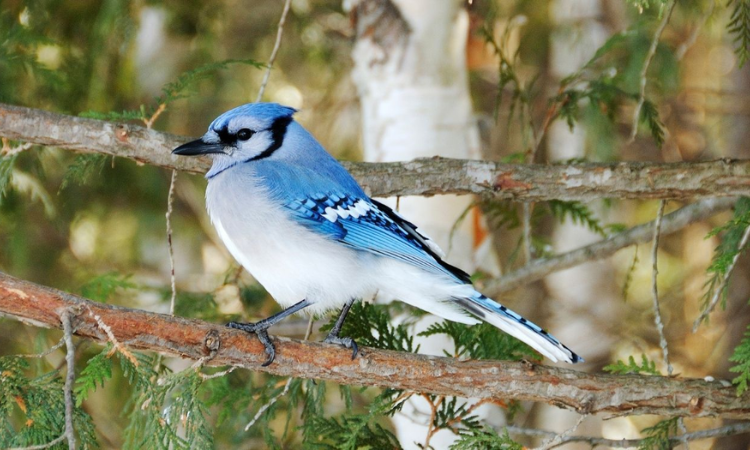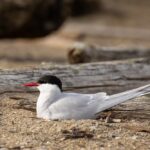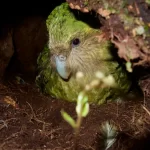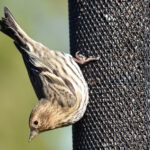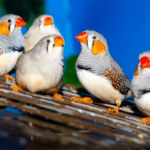As an avid birdwatcher for over 7 years now, I’ve had the delight of spotting many species of birds in forests, backyards, and nature preserves. One of my favorites is the stunning blue jay. With their brilliant blue plumage, distinctive calls, and clever personalities, blue jays capture the imagination of birders and nature lovers everywhere.
In this article, I’ll share my years of experience and expertise on how to identify blue jays based on sight, sound, behavior, habitat, and other characteristics. Whether you’re a beginner birder or a seasoned pro, read on to uncover the captivating world of these beautiful backyard birds!
Distinctive Visual Markings
The most striking feature of blue jays is their vibrant, cyan-colored feathers covering most of their bodies. The only exceptions are a white underside and black collaring around the neck. Blue jays have a large crest on top of their heads which they can raise and lower based on their mood. Their faces have distinct black “eyebrow” markings with a white patch just above the beak.
These markings make blue jays easy to identify, especially when multiple jays congregate. I often see them travel together in small flocks or family groups, chattering loudly amongst the trees near my home. Their blue plumage vividly contrasts against green foliage or brown tree bark, making them easy to spot.
Variations and Rare Mutations
While most blue jays sport the standard blue and black coloration, some subtle regional differences exist. Jays along the west coast tend to have darker blue hues while their midwest cousins show more gray on the underside. Rare genetic mutations can also occur, such as albinism which removes most color, or melanism which excessively darkens plumage.
In my 7 years of birdwatching, I’ve spotted a few of these unique color variants. One albino jay visited my backyard feeder, its all-white form glowing brightly among normally pigmented peers. I’ll never forget that incredibly rare sight! These color morphs remind me how diverse and wonderful bird populations can be.
Distinctive Calls and Sounds
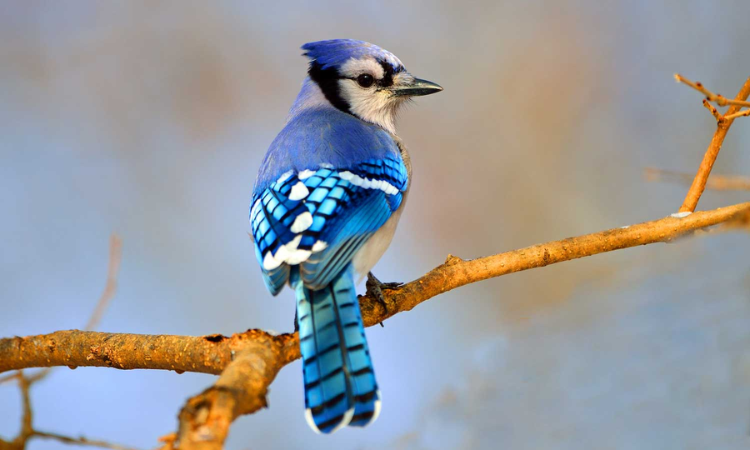
Blue jays have a wide repertoire of loud, ringing vocalizations used to signal danger, claim territory, and maintain contact. Their most common call, the “jay jay” scream, is a harsh, raspy shriek that carries far through woodlands. Blue jays have incredibly strong voice boxes allowing them to belt noises much louder than expected from their medium size.
I often hear jay screams long before the birds come into view. This call usually means a predator like a hawk is nearby. Jays will mob such threats as a group while yelling a raucous warning to other birds. Their screams tell me I should scan the skies for a possible accipiter soaring overhead!
In softer interactions, blue jays emit musical-sounding whistles, pops, gurgles, and rattling sounds. Mated pairs communicate in quieter tones. Young jays just out of the nest produce pleading calls when begging for food from their parents. Paying attention to jay vocalizations reveals much about their group dynamics and behavior.
Characteristic Behavior
Beyond visual and auditory identification cues, the behavior of blue jays offers more clues to their presence. Their flight pattern is generally direct and purposeful, lacking the buoyancy of smaller songbirds. Jays fly using quick wing beats before gliding for short periods. In my observations, they most often fly from tree to tree instead of long distances over open spaces.
On the ground, blue jays walk and hop rather than shuffle like sparrows or thrushes. I commonly observe them foraging on grass or forest floors for insects, seeds, fruits, and nuts. Their large beaks and feet are well-adapted to cracking hard shells of acorns or other mast. In both spring and fall, I watch jays busily collect and cache food items to stockpile for later.
Blue jays are highly intelligent and very social. They demonstrate problem-solving skills when accessing bird feeders, using their beaks to remove obstacles. Hand-raised jays can even learn words or phrases and mimic human speech! When interacting with fellow jays, they display evident curiosity, playfulness, and affection. Their charming personalities match their gorgeous looks.
Preferred Habitats
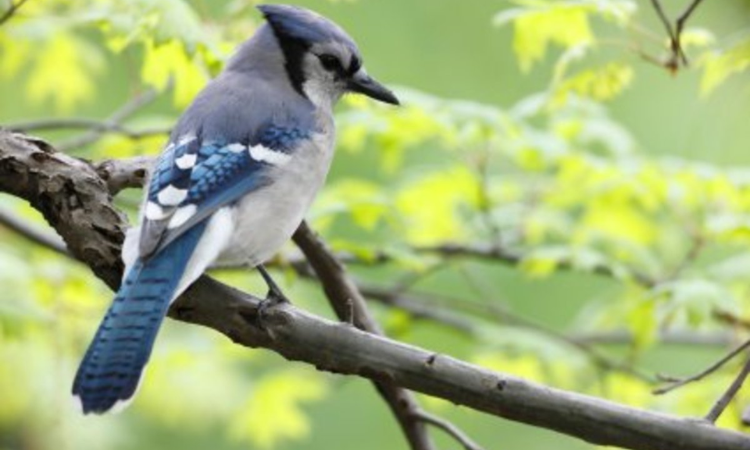
Blue jays occupy a wide range of forested and mixed-habitat environments across North America. On the East Coast where I live, jays thrive in oak and beech woodlands dotted with clearings and backyard feeders. On the West Coast, they prefer mixed evergreen forests comprised of pine, fir, redwood, and spruce.
A plentiful, year-round food source is crucial for jays to survive cold winters and breed successfully. I always find them in areas boasting oak or pine trees which supply energy-rich nuts and seeds. A combination of forests and open space works perfectly to suit their needs for cover, nesting spots, and foraging grounds. Jays sometimes visit backyards but typically don’t stray far from woodland habitats.
In summer months, listen for screaming jay flocks near forest edges and you’re likely to catch sight of a few stunning blue forms sailing amongst the trees. In winter follow the sound of jays loudly scolding predators or each other and you may find them busily harvesting acorns to cache for the cold months ahead.
Helpful Identification Tips
Here are some handy bullet points for identifying blue jays in the field:
- Scan treetops for medium-sized songbirds with brilliant cyan blue coloring on the back and wings
- Note the white belly, black neck ring, and large head crest which may be raised
- Watch for direct flight pattern between trees, with bursts of flapping mixed with short glides
- Listen for loud, harsh “jay jay” shrieks that carry far and signal a predator’s presence
- Pay attention to quieter musical whistles and gurgles denoting softer communication
- Observe jays foraging on the ground for nuts, fruits, seeds, and insects which they stuff into throat pouches
- Expect jays to behave playfully and socially in small flocks or family groups amidst trees
- Seek out oak or pine woods adjoining semi-open space for the best chance to find blue jays
After reading those tips and learning about key blue jay traits, you’ll be prepared to successfully identify these charismatic songbirds. Next time you hear their riotous screams or spot those vibrant blue forms fluttering through the forest, take a moment to admire one of nature’s avian wonders!
Read More – Discover the Charm of Finches and How to Care for Them Properly

Stina is the expert behind BirdFacts.net, dedicated to sharing her passion and knowledge about birds. With a degree in Environmental Science and over 6 years of birdwatching experience, she brings both expertise and enthusiasm to her writing. Stina’s work aims to inspire appreciation for birds and promote responsible birdwatching. Follow her bird-filled journey on Instagram.

